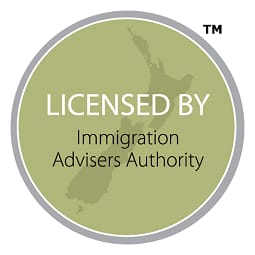New Zealand Immigration Changes 2025: What Migrants Need to Know
- By Vineet Bhardwaj
- Immigration, Immigration Changes, Immigration New Zealand, New Zealand, New Zealand Student Visa, Resident visa, Resident visa, Student Visa, Study Visa, Tourist Visa
- 508 comments

This Blog numbers and explains each major change, with candid analysis. We’ll cover most New Zealand Immigration Changes 2025 including Accredited Employer Work Visa (AEWV) reforms, family (Dependent Children) visas, visitor visa updates (including digital nomads), and student visa processing improvements.
New Zealand’s government rolled out sweeping immigration changes in 2025 that touch many visa categories. Whether you’re a skilled worker, student, or family member, there are important updates on work visas, visitor rules, student processing, and residency programs.
In this blog, I have tried to cover most changes so that you can find all the popular changes here in one place.
AEWV Work Visa Reforms
New rules make it easier for skilled migrants to work in NZ. Here are the changes to the AEWV policy.
A. No More Median Wage Threshold
Before:
You had to earn at least the “median wage” (prescribed by INZ) to qualify for most AEWV jobs.
Now (from March 2025):
✅ The mandatory median wage threshold is scrapped.
✅ Employers must offer the market rate for the role, but it doesn’t have to meet a fixed national figure.
✅ This gives more chances for genuine workers in industries like retail, hospitality, trades, healthcare, and construction.
B. Reduced Work Experience Requirement
Before:
You needed at least 3 years’ relevant experience for most AEWV roles.
Now:
✅ Only 2 years of relevant experience is required!
You must have either:
- 2 years or more of relevant work experience, or
- a qualification at level 4 or higher on the New Zealand Qualifications and Credentials Framework (NZQCF).
Your qualification or work experience must be in the same field or industry as the job you have been offered. If you have a Bachelor’s degree or higher, your qualification can be in any field or industry.
C. Longer Visa Lengths for Low-Skilled Workers
Before:
If you held a mid-skilled (ANZSCO 4-5) job, you only got a 2-year AEWV.
Now:
✅ You can get a 3-year AEWV even in mid-skilled roles.
D. Higher Salary Requirement to Bring Your Family
Before:
Salary thresholds to bring dependent children and partners were lower.
Now:
✅ AEWV holders must earn at least NZ$55,844/year (80% of the median wage) to sponsor dependents.
Impact:
If you are a migrant planning to bring your spouse and kids to New Zealand, you’ll need to ensure your salary meets this new requirement. It is important for budgeting and planning family reunification.
E. Easier Job Advertising Rules for Employers
Before:
Employers needed a 21-day domestic advertising period with the Work and Income Department before offering a job to a migrant.
The following points remain unchanged.
- If the job is ANZSCO skill level 1, 2 or 3, you must advertise for at least 14 days.
- If the job is ANZSCO skill level 4 or 5, you must advertise for at least 21 days.
What has changed now:
✅ The 21-day period of advertising with Work and Income is now replaced by a simple ‘good faith’ declaration. Employers must declare that they have, in good faith, advertised ANZSCO skill level 4 or 5 jobs with Work and Income and interviewed candidates who could have been suitable for the job.
✅ Employers must still try to recruit New Zealanders but the process is faster and less bureaucratic.
F. Interim Visa Work Rights Simplified
Before:
Migrants switching employers sometimes had to stop working while their visa was processed.
Now:
✅ Full work rights on interim visas if you apply for a new AEWV from another work visa.
✅ Time spent working on the interim visa counts toward experience and maximum AEWV duration.
New provisions from 8 April 2025 allow migrants to keep working while waiting for visa decisions. Now, anyone applying for a new AEWV while on an existing work visa (or a student visa that allows term-time work) will automatically get an interim visa with full work rights. In practice, this means a worker can start the job in their application without a gap. Time spent on that interim visa also counts toward the experience needed for residency pathways and toward the maximum length of their AEWV stay.
This change reduces career disruptions: workers no longer have to stop income to await processing. Many migrants rejoice at being able to “bridge” jobs seamlessly. Officials say it streamlines transitions and encourages skilled workers to stay employed in NZ during processing delays. The potential downside is minimal, primarily that it formalises a kind of temporary visa. On balance, employers and migrants see this as positive: it cuts uncertainty and financial strain, especially for those switching accredited employers or visa categories.
Family Visas: Partner Work Rights & Child Health Rules
Family visa rules saw mixed news for migrant families. On the positive side, partner visas were liberalised. Since 2 Dec 2024 (carrying into 2025), open work visas are available to many partners of skilled workers. For example, spouses of AEWV holders in ANZSCO 1–3 jobs earning at least $25.29/hr can now work for any employer. Similar relaxations apply to partners of Essential Skills visa holders. This means immigrant families can stay together without sacrifice: a migrant’s spouse can seek NZ employment immediately.
However, the government tightened health requirements for children. From 17 March 2025, dependent children of work, student or military visa holders who have severe cognitive or developmental disabilities requiring significant support can no longer get a student or visitor visa. In other words, children needing intensive care are excluded from these temporary visas. Officials say this aligns with the higher bar for permanent residency (to protect public services) and gives families upfront clarity. The impact is emotional: affected parties worry it forces hard decisions on families who may have to leave a child behind, or miss out on education.
In sum, the partner work-rights changes are widely praised as pro-family and pro-labour. The child health rule, however, has prompted concern and sadness in immigrant communities. Many agree it’s a difficult balance: easing workforce needs versus the risk of separating vulnerable kids from their caregivers. On net, families must navigate these nuanced shifts: greater job mobility for spouses, but stiffer limits on bringing dependents with special needs.
Parent Resident Visa Boost
The Parent Category Resident Visa saw a one-off quota increase to clear the backlog. Normally, only 2,000 “queue” slots and 500 ballot slots (2,500 total) are issued each year. In early 202,5 Immigration NZ confirmed it had already approved more parent visas in principle than usual. The Immigration Minister agreed to grant up to 2,331 visas from the queue (an extra 331 slots) by 30 June 2025, specifically to issue visas to parents already approved-in-principle. (The 500 ballot visas remain unchanged.) Next year’s cap stays at 2,500.
For families on waiting lists, this is welcome news: hundreds more parents can finally come out of limbo. It shows the government responding to demand, not only by maintaining the 2,500 cap, but squeezing in extra issuances. We expect this to alleviate distress for many elderly parents. However, the overall quotas are still limited. No new streams were opened, so thousands remain in the queue. Rumours of a “Parent Boost Visa” (a new long-term entry visa for parents) suggest more help may be on the horizon later in 2025, but for now, the focus is on processing existing approvals.
Digital Nomad and Visitor Visa Loosening
New Zealand now welcomes digital nomads. Effective 27 January 2025, any visitor visa granted lets holders work remotely for their overseas employer. In practice, if you come on a regular tourist or business visa, you may answer emails, code, consult, blog, or manage projects for a foreign company without breaking the law. There is no limit to remote work on these visas, as long as your employer is outside NZ. (However, working for a NZ company still requires an appropriate work visa.) Visitors are still limited in length (generally 3 or 6 months at a time) but can apply to extend up to 9 months if needed.
Officials hope this draws “workcation” tourists: people who stay longer and spend more locally while working remotely. Finance Minister Nicola Willis said NZ wants to be a “haven” for global talent. Employers and the tech industry are excited about attracting skilled travellers who might later invest or move here. A concern is enforcement: authorities will expect digital nomads to obey tax rules and ensure no one abuses the visa by working locally. For now, the change is a huge positive for remote workers itching to experience NZ culture. It makes NZ as friendly as other countries’ digital nomad visas (without requiring a whole new visa application).
International Student Visa Processing Changes
International students got a boost too, albeit administrative. Immigration NZ will prioritise student visa applications from students in NZ who are enrolling in a new course or provider. This is because students must secure their visa with updated study details before starting the term. All other student visas continue in date order. INZ stressed that students should submit complete applications with tuition receipts to avoid delays.
For students, this means changes to study plans (like switching programs) may be processed faster, which is welcome news for anxious learners. Any student applying from abroad or not changing courses will still wait as usual, so overall processing times may not drastically improve. The core message is: double-check your paperwork and pay fees upfront. Student support groups say this prioritisation is helpful, but they emphasize that incomplete applications will be declined without notice under the new system. In sum, student visa rules didn’t change on paper in 2025, but INZ is working to manage peak-season loads and keep enrolments on track.
Conclusion
New Zealand’s 2025 immigration changes, especially around the AEWV, signal a clear shift toward making migration pathways more practical, accessible, and family-friendly — but not without new challenges.
For a common migrant, whether you are a chef, caregiver, software developer, or construction worker, the removal of the median wage requirement and lower experience thresholds mean the dream of living and working in New Zealand is no longer tied only to elite qualifications or corporate salaries. Talent, skill, and dedication are once again enough.
However, the higher income threshold for sponsoring family shows that while New Zealand welcomes migrants, it expects them to have a strong economic base to support dependents. This could delay family reunification for lower-paid workers, and that’s a reality we cannot overlook. It demands careful financial planning and, sometimes, initial sacrifices.
Overall, these changes open doors wider for hardworking, honest migrants and their loved ones, especially from countries like India, where dreams of a better life drive people to faraway shores.
For families, the message is simple yet powerful:
🔵 More opportunities to come together in New Zealand — but
🔵 Higher responsibility to sustain yourselves independently once you arrive.
If you’re serious about making New Zealand your new home, the next 12 to 18 months are absolutely crucial. It’s time to move beyond hesitation, align your goals, and plan your journey smartly — because opportunity favours those who are ready.
New Zealand still believes in rewarding those who take bold steps toward a better life.


The author, Vineet Bhardwaj, is a fully Licensed Immigration Adviser.
Licensed by the Immigration Advisers Authority (IAA). His Licence number is 201801245.
Connect with Vineet today:
✉️Email: vineet@visaadvice.info
📞Call or WhatsApp: +64 223006101
📝Fill up a small form: https://visaadvicenewzealand.co.nz/contact/
Follow us at:
YouTube: https://youtube.com/c/VINEETBHARDWAJNZ
Website: https://visaadvicenewzealand.co.nz/
Facebook: https://www.facebook.com/VineetNZ/
LinkedIn: https://www.linkedin.com/in/vineetbhardwajnz/
Instagram: https://www.instagram.com/visaadvicenz/
Read our blogs: https://visaadvicenewzealand.co.nz/blogs/

